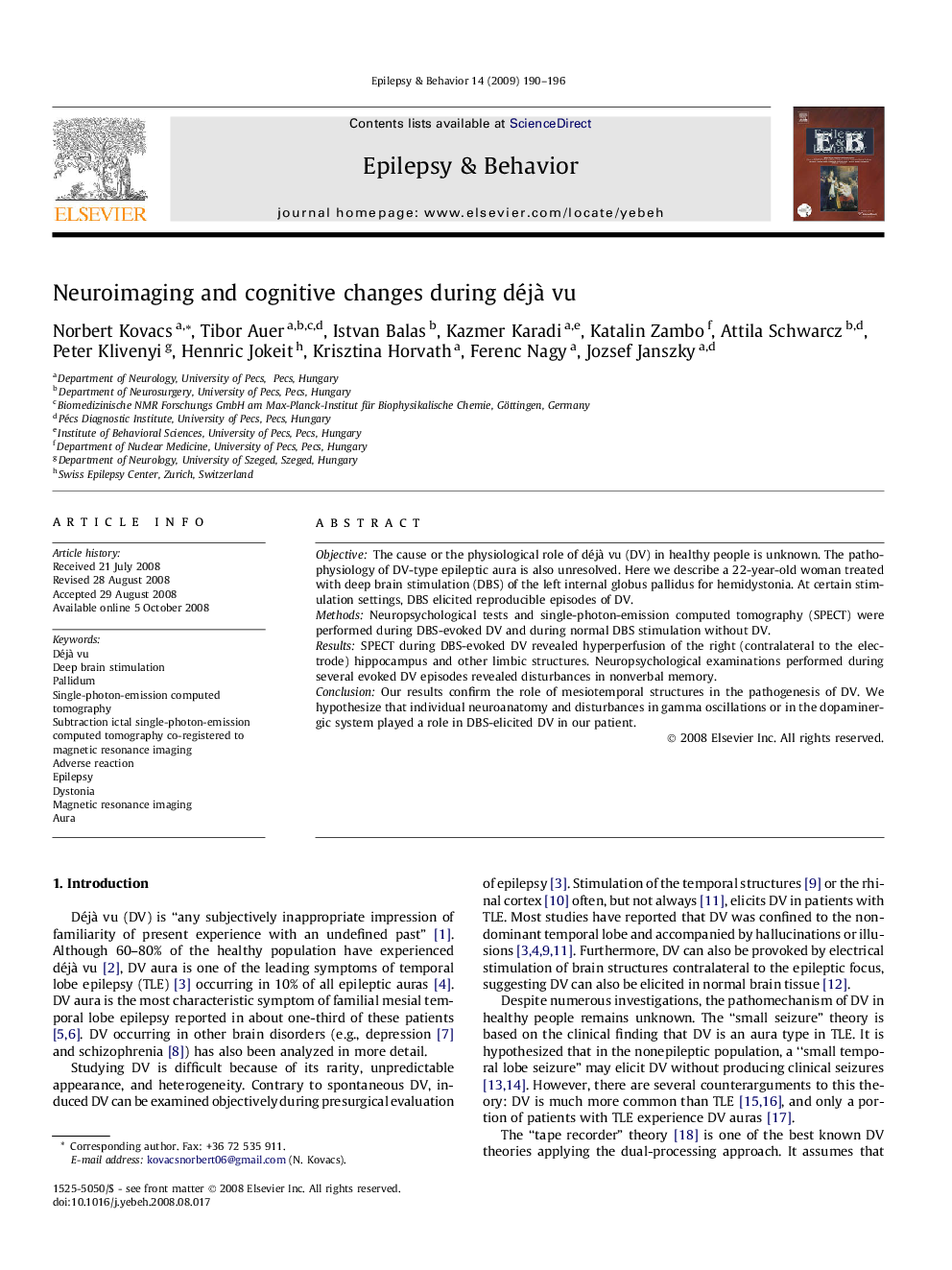| Article ID | Journal | Published Year | Pages | File Type |
|---|---|---|---|---|
| 3051046 | Epilepsy & Behavior | 2009 | 7 Pages |
ObjectiveThe cause or the physiological role of déjà vu (DV) in healthy people is unknown. The pathophysiology of DV-type epileptic aura is also unresolved. Here we describe a 22-year-old woman treated with deep brain stimulation (DBS) of the left internal globus pallidus for hemidystonia. At certain stimulation settings, DBS elicited reproducible episodes of DV.MethodsNeuropsychological tests and single-photon-emission computed tomography (SPECT) were performed during DBS-evoked DV and during normal DBS stimulation without DV.ResultsSPECT during DBS-evoked DV revealed hyperperfusion of the right (contralateral to the electrode) hippocampus and other limbic structures. Neuropsychological examinations performed during several evoked DV episodes revealed disturbances in nonverbal memory.ConclusionOur results confirm the role of mesiotemporal structures in the pathogenesis of DV. We hypothesize that individual neuroanatomy and disturbances in gamma oscillations or in the dopaminergic system played a role in DBS-elicited DV in our patient.
